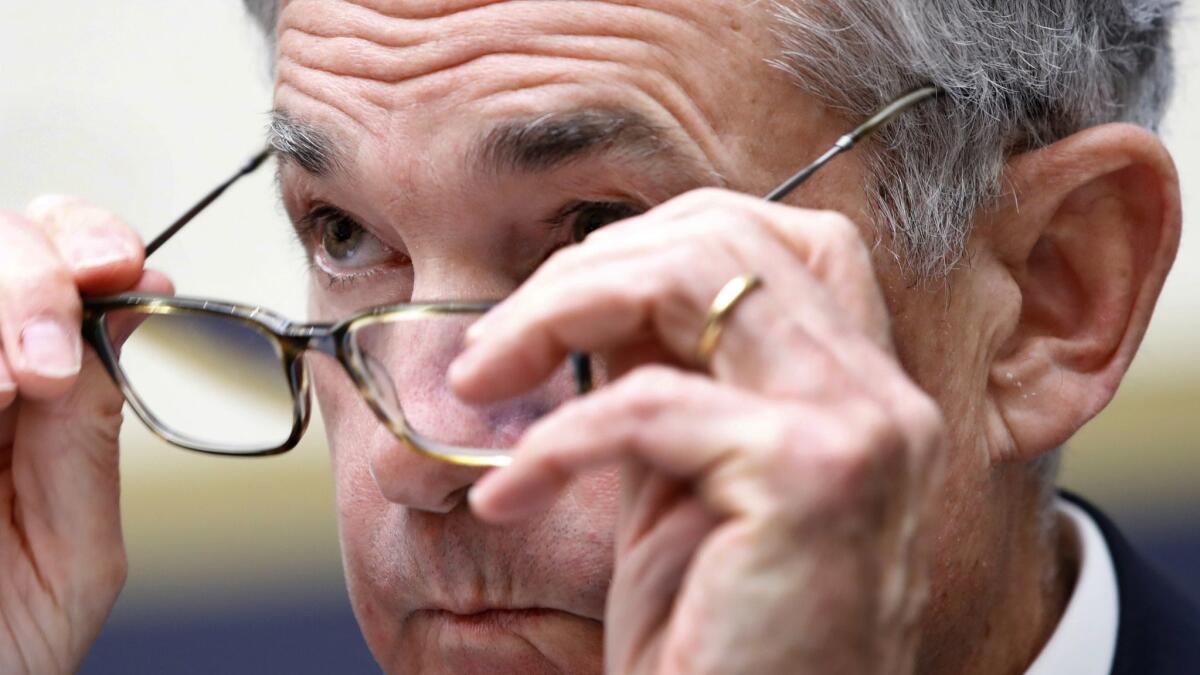Fed prepared to raise interest rates again despite Trump’s displeasure

- Share via
The Federal Reserve is ready to raise interest rates again next month as long as the economy stays healthy — despite criticism from President Trump over the central bank’s money-tightening policy and concerns about the ongoing trade war.
That was a key takeaway of minutes released Wednesday of the Fed’s policymaking meeting held July 31 and Aug. 1 in Washington, though there was no explicit mention of the repeated shots Trump has lobbed at the Fed.
Led by Jerome H. Powell, a Trump appointee who took over the chairmanship in February, policymakers are gradually raising their benchmark federal funds rate. The aim is to give the economy room to grow while keeping inflation in check.
There’s little evidence that the seven quarter-point increases since December 2015 are hurting growth despite the criticism from Trump, who has voiced numerous concerns about the policy he claims will hurt the economy.
Powell may update his outlook when he gives a speech Friday on monetary policy at the Kansas City Fed’s annual forum in Jackson Hole, Wyo.
Fed officials left the benchmark lending rate unchanged earlier this month at a range of 1.75% to 2% while upgrading their description of economic growth in their statement to “strong,” compared to “solid” in June, when rates were last raised.
The minutes said that “further gradual increases” in their target rate “would be consistent with a sustained expansion of economic activity, strong labor market conditions and inflation near the committee’s symmetric 2% objective over the medium term.”
All the participants said the U.S. trade disputes created “an important source of uncertainty and risks.”
There also was debate over the effect of the tax cuts passed by Congress late last year. Some Fed policymakers noted the stimulus from those cuts could have a larger effect than anticipated, while others said “that a faster-than-expected fading” of the economic impact constituted a “downside risk.”
Much of the discussion by the policymaking Federal Open Market Committee — composed of the Fed’s three governors and presidents of four of its regional banks — involved weighing risks.
Some participants raised the concern “that a prolonged period in which the economy operated beyond potential could give rise to inflationary pressures or to financial imbalances that could eventually trigger an economic downturn,” the minutes said.
Fed district banks reported that firms had “greater scope than in the recent past to raise prices” in response to strong demand or rising business costs.
The staff forecast continued to project that the economy would grow “at an above-trend pace” while the decline in the unemployment rate would slow as more people enter the workforce.
Times staff writer Laurence Darmiento contributed to this article.
More to Read
Inside the business of entertainment
The Wide Shot brings you news, analysis and insights on everything from streaming wars to production — and what it all means for the future.
You may occasionally receive promotional content from the Los Angeles Times.









